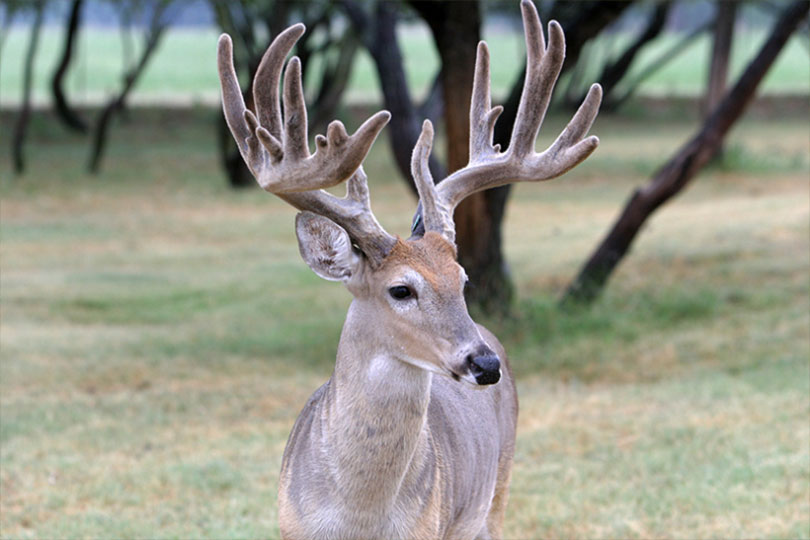By Jessica Domel
Multimedia Reporter
The Texas Parks and Wildlife Department (TPWD) confirmed eight new cases of chronic wasting disease (CWD) in deer breeding facilities and a release site in four counties with two additional sites awaiting confirmation.
According to TPWD, three cases of CWD were found in a breeding facility in Zavala County, and a single case was found in a Washington County facility through live animal testing that was conducted prior to moving the deer to registered release sites.
Three cases of the fatal, neurological deer disease were also confirmed at a site in Gonzales County through antemortem and postmortem testing that was required by a CWD Herd Plan after the facility received deer exposed to CWD from a Uvalde County facility that had a CWD positive detection in 2021.
TPWD and the Texas Animal Health Commission (TAHC) are investigating the extent of the potential spread of CWD within the facilities.
“It continues to be imperative for producers to stay diligent with testing susceptible species for CWD,” Dr. Andy Schwartz, TAHC executive director and state veterinarian, said. “With an incubation period that can span years, the first indication of this degenerative disease in a herd may likely come through testing, rather than observing clinical signs. Early detection and proactive monitoring improve the state’s response time and can greatly reduce the risk of further disease spread.”
The positive detections were the first for Zavala, Gonzales and Washington counties
As a precaution, the deer in the facilities have been secured and CWD surveillance zones have been proposed to monitor the area for potential spread of the disease.
Dr. Hunter Reed, TPWD wildlife veterinarian, told the Texas Parks and Wildlife Commission Wednesday the proposed zone in Zavala County would impact 22 properties.
The zone in Washington County would cover 555 properties and the zone in Gonzales County would encompass 104 properties.
Reed told the commission they are awaiting confirmation on two probable cases of CWD—one in Hamilton County and another in Frio County.
This week, TPWD also confirmed a positive case of CWD in a white-tailed doe harvested on a release site in Hunt County that is adjacent to a breeding facility that has previously had a CWD case.
It was the first detection of CWD in a free-ranging deer in Hunt County.
The testing that revealed the presence of CWD in the breeding facilities was the result of action taken by the Texas Parks and Wildlife Commission.
Since 2021, the commission has required antemortem CWD testing for deer prior to be moved to a release site.
The disease surveillance tool has detected CWD in five deer breeding facilities where it was not previously known to exist.
TPWD says transferring even one CWD-infected deer from a breeding facility could ultimately affect all deer in the vicinity of the transfer with irreversible impacts.
“With disease surveillance, our goal is to monitor and identify disease expeditiously to minimize the impact of outbreaks,” Reed said. “This is a continuous process that hopefully results in little to no disease being detected since [ideally] our disease management strategies are effective in limiting transmission. This additional surveillance from antemortem testing not only allows us to respond more quickly to an outbreak, but it also provides us with a robust, continuous testing baseline that can further elucidate the epidemiological uncertainties related to the origin of the disease outbreak, in addition to guiding future changes to our disease management strategy.”
CWD is a slow, progressive disease that impacts members of the cervid family including white-tail and mule deer, elk and moose.
It can be spread to susceptible animals through direct contact with an infected animal or their carcass or indirectly through infected items in the environment like soil, dust or forage.
Infected animals shed prions in their saliva, urine, feces, blood and soft antler material that can infect other susceptible animals for years.
CWD has a long incubation period during which time infected animals may not show any outward signs of illness.
As the disease progresses, symptoms may include: progressive weight loss, stumbling or tremors with a lack of coordination, excessive third, salivation or urination, loss of appetite, teeth grinding, abnormal head posture and/or drooping ears.
CWD was first detected in Texas in 2012 in a free-ranging mule deer near the Texas-New Mexico border.
Since then, it has been detected in 471 captive or free-ranging cervids in 20 Texas counties.
According to TPWD, to-date, there are no known cases where CWD has infected a human; however, recent research suggests that CWD transmission from infected animals to humans should not be ruled out.
As a precaution, hunters are encouraged to have their deer tested for CWD. To make this easier, during deer hunting season, TPWD establishes CWD check stations where deer may be tested.
TPWD recommends that no one consumes the meat of infected animals.


I live in Mills County Texas. We live on a farm with land surrounding our 150 acres. There are a lot of deer. I have fed the deer for awhile now, about 8 years. Last year we had deer that came who were apart of three different herds. Deer came who began showing drastic loss of hair and weight. Then we had one die at our barn. The herd size fell down a-lot. This Spring the deer all looked good except for a couple. One coughed a-lot. Then they began showing a loss of hair, and weight, extreme weight loss. Then one came up to the fence and died there. Now-the herd has gone way down and those who do come seem confused. They will come up but they won’t eat. The very young will eat and so far they aren’t showing any signs except with confusion. If you have any information please call or e-mail. Our my is 8175965048.
You can contact the TPWD office that serves Mills County. That would be Olivia Kost, Wildlife Biologist (Brownwood), 254-433-0613